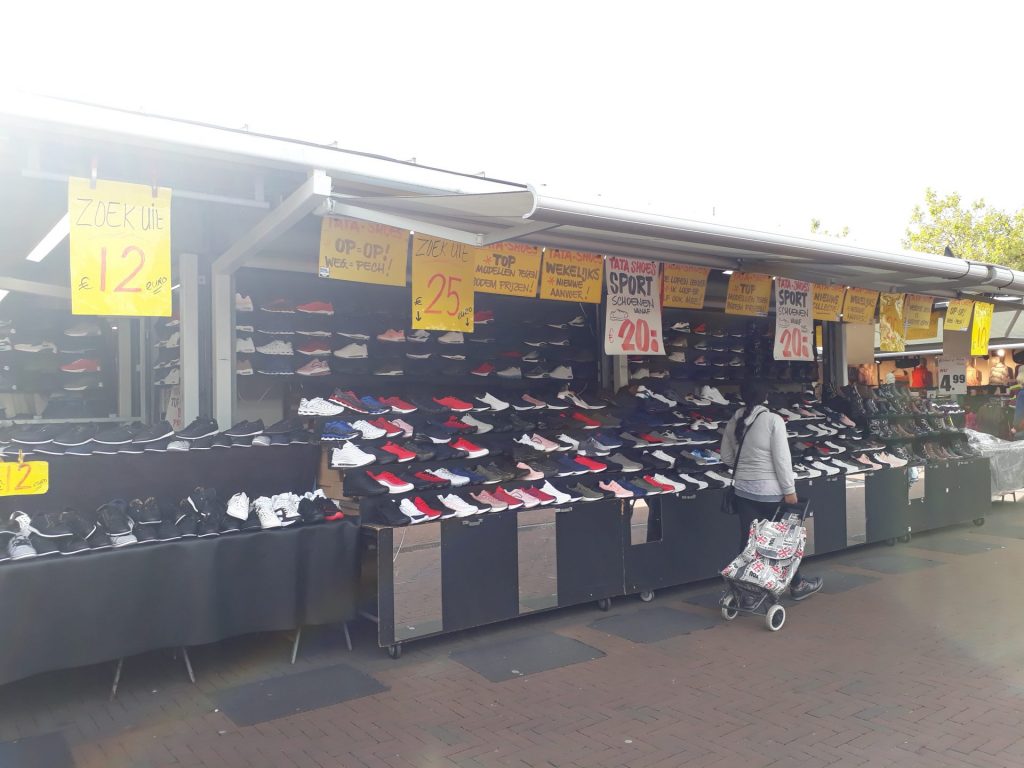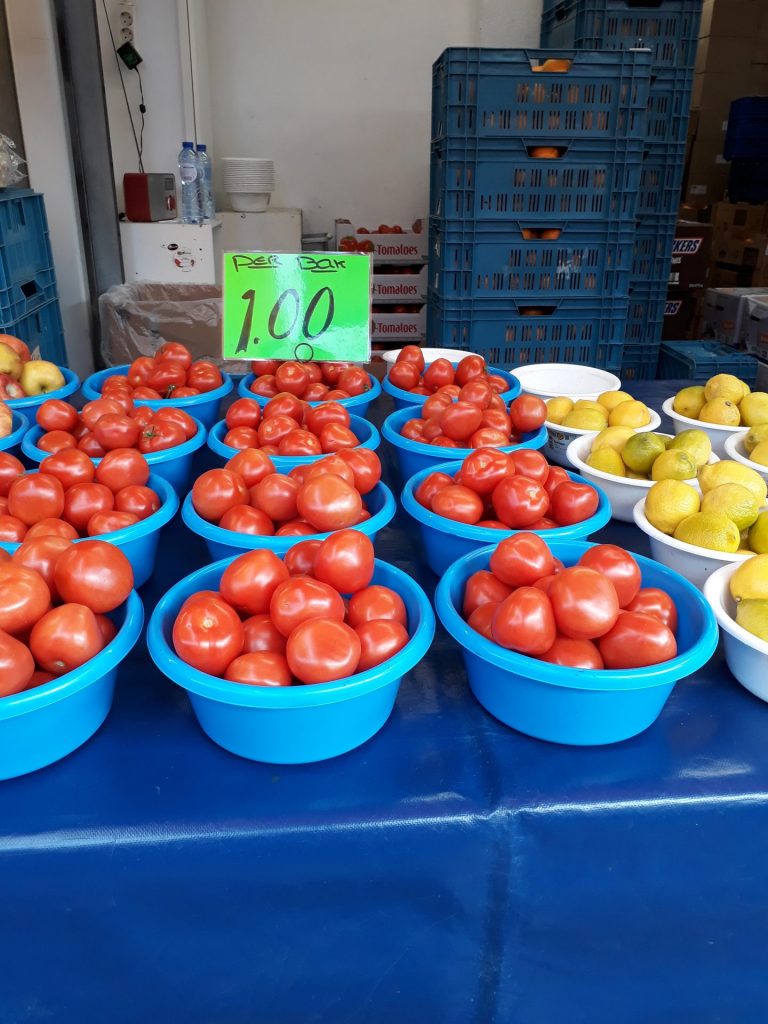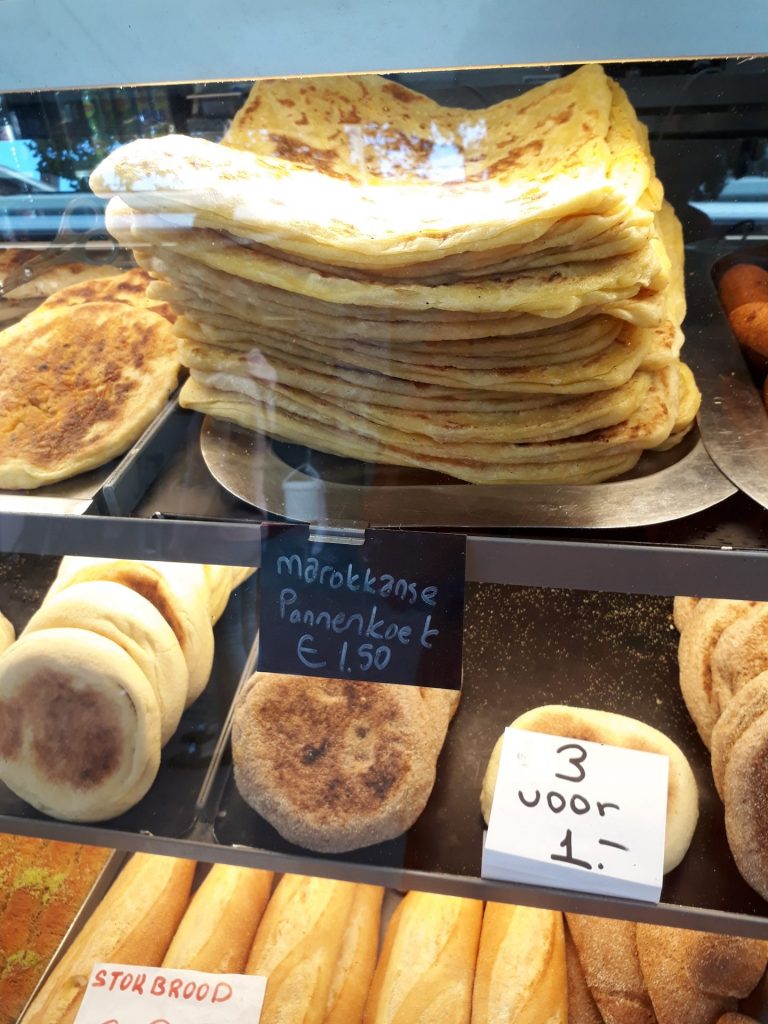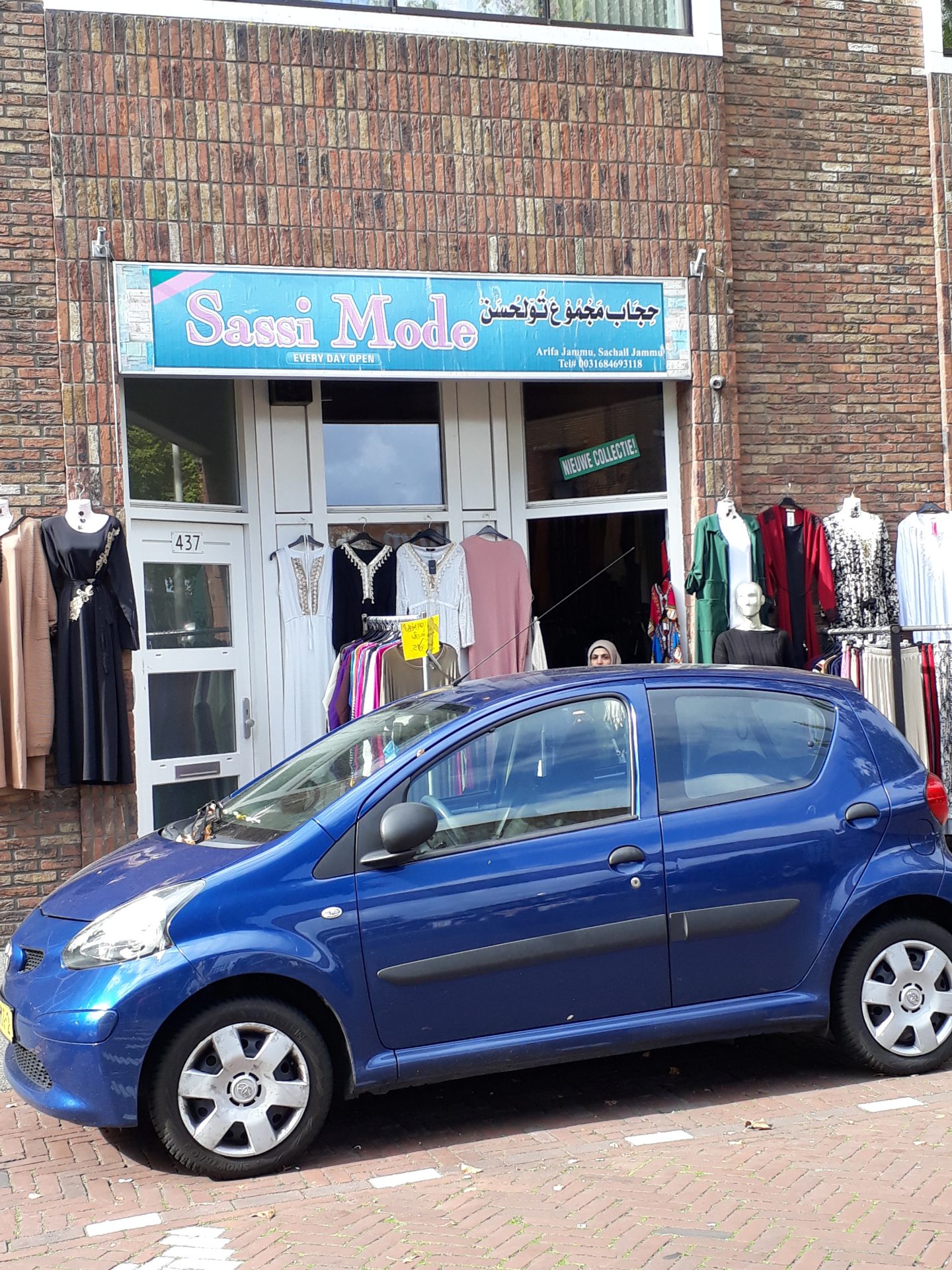The relations of identity to the market: a market as a space of economy or a space of belonging?
Before entering the gate to the market, I already see differences between downtown of the Hague and this part of the city. The streets leading up to the Haagse market are very subdued and a bit dirty. The neighborhood consists of grey, brown and dark red apartment blocks, partly unkept lots as well as trash bins. Under the buildings are different kinds of shops such as jewelry stores with owners from countries such as Suriname or Pakistan that would only allow customers to come in after unlocking the doors from inside with a buzzer. And small super-markets that sell various household products, stores that sell cigarettes and hookah tobacco. Many shops have signs that are not only in Dutch or English but also in Arabic such as حجاب مجمؤع تولحسن. (Tulhasan group for veils) or مجزرة اسلامية (Islamic butchery).

About a block away from the market, I only see people with diverse backgrounds. In comparison to the rest of the city, I see a lot of people of color and of a middle eastern descent. Unfortunately, at this point I do not see Dutch/ European looking people, indicating the racial segregation aspect of this area. I see a lot of women wearing jeans, shirt and jacket, but also women clothed in loose, long dresses and the hijab or even niqāb. The men walking around are wearing standard jeans/ pants, shirt and jackets. To my surprise, I also start to hear different languages ranging from Arabic to French to even Amharic. Hearing Amharic (official language of Ethiopia) is a very unexpected phenomenon in the Netherlands. But here, I am in the Hague in front of Haagse Market listening to a woman calling for her son to come to her in my own native language. In front of the market are two stands, one for selling fried fish and the second for sweet corn boiled or fried. Once one buys a cup of sweet corn, it is possible to season it with salt, mayonnaise and spicy chili powder.
Heading closer to the market, I decide to buy a corn and join the people heading to the market, a space that is colorful, loud, alive, chaotic and beautiful. The atmosphere is very much known to me. A rush of happiness and belongingness comes over me. The only time this is interrupted is when I was walking next to a café that one would typical expect to find in gentrified neighborhoods of large cities. Here, I see Dutch/ Europeans having a coffee, tea or freshly pressed juice. To my surprise, there is clear socio-economic difference between the people sitting there and the rest walking around the market. And I started to ask myself why this was the case. The café with its customers seems oddly out of place. Nonetheless, I stroll further to see that on the left-hand side of the entrance is where one can find a flower shop next to a shoe shop selling fake shoes from Nike/ Adidas/ Louis Vuitton with prices ranging from 5-50€ per item. The market is transformed into a space where any item can be found. When I continue walking, I see a big shop with different cloths meant to be turned into beautiful colorful dresses next to a weave extension station.

All around there are people walking with their collapsible trolley bags with wheels in order to find the best price and the vendors yelling “Een bakje, een euro!” (A bakje is a small tray with products inside of it, costing 1 euro). This is done in order to lure the customers with amazing deals for the products. Vendors trying to establish eye contact with the customer for signs of confirmation to put the product in a “not so eco-friendly” plastic bags as soon as possible. One finds a mixture of products such as herbs like mint, parsley, coriander, peppermint, baklava, cowpea next to electronic items and different seasonal fruits and vegetables.

On the right-hand side of the market is where fresh fish and meat can be found. A lot of vendors, who sell fish and street food are of descendants of different African countries, but also from Suriname. This became clear to me as I hear them talk in Arabic or Darija (Moroccan dialect). But also, many of the food offered came from different parts of the world. An example is bara (a sort of donut which is made out of different spices before being fried), empanadas (filled pastries) and msemmen (pancakes).
Heading closer to the msemmen, I catch myself without hesitation that he would not understand me uttering
“عندك عسل” (do you have honey) and he answered with a smile indicating that he knew why I was asking for honey that he did not have any.

On my way back to Leiden, I started to think about what I have seen today and how I felt about being at the market. For me, many observations were affected by my own experience in Cairo and Rabat. I found myself looking at the cloths and food displayed and remembering seeing them in Rabat. My participation in this social setting was natural to me. I was not just observing the customers or vendors. But I was a customer myself, buying fruit or vegetable here and there. I felt like I was back in Rabat walking through the old medina, wondering around, looking but not for something specific thus, not being bothered by the offers of products that had nothing to do with one another. I shifted my role from an observer to a complete participant very easily as the social setting seemed a part of cultural interaction I knew very well. As I was writing down the data I collected in form of observation, notes and pictures, I felt that I was not “researching” the “unfamiliar” but rather finding pieces of my own lived experience. Thus, I wonder how many of the people who go there have the same nostalgic experience. I ask myself why do people go there? To find the best prices or to just to find themselves in familiar surroundings with people that looked like them? To find food like what they know from their childhood. I find myself wondering and wanting to know more about the background of the visitors of the Haagse market! But also asking myself if my own lived experience will/ should guide me in my academic work.


